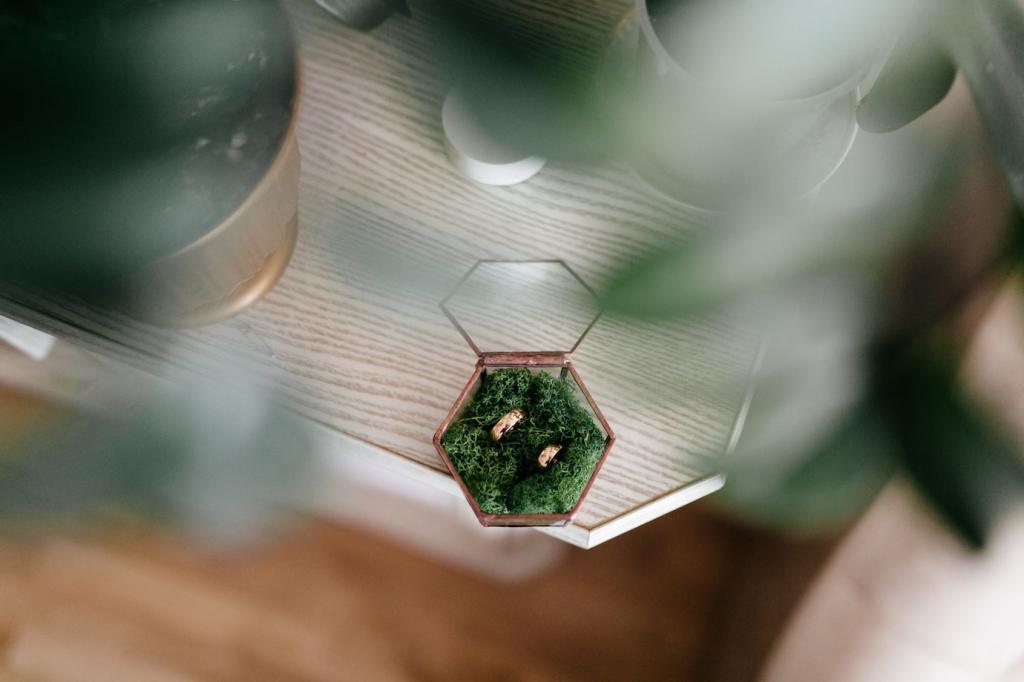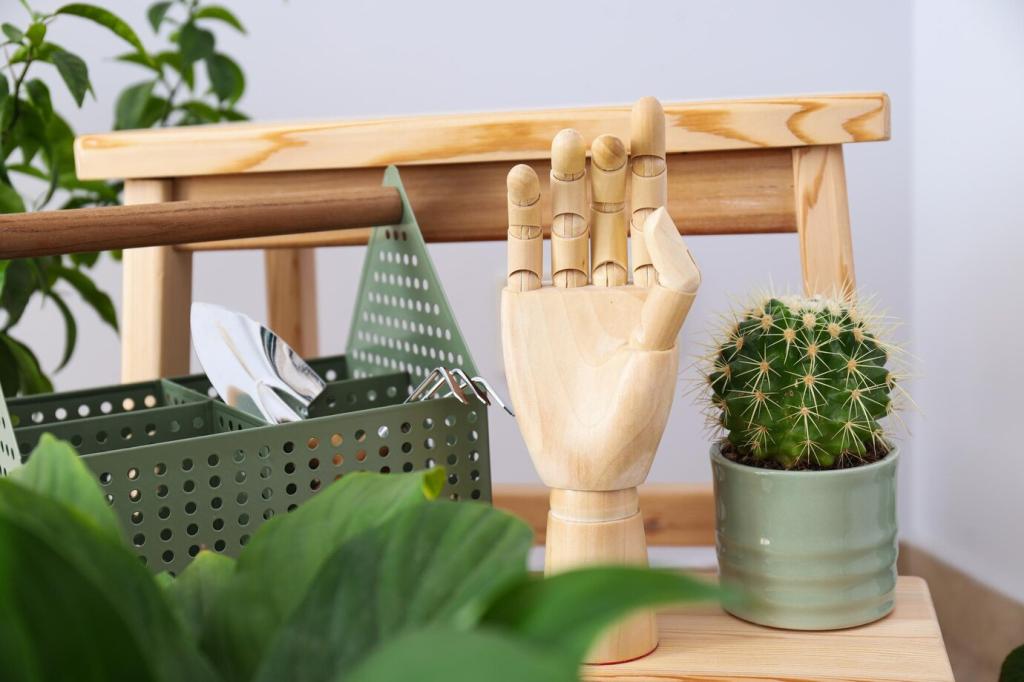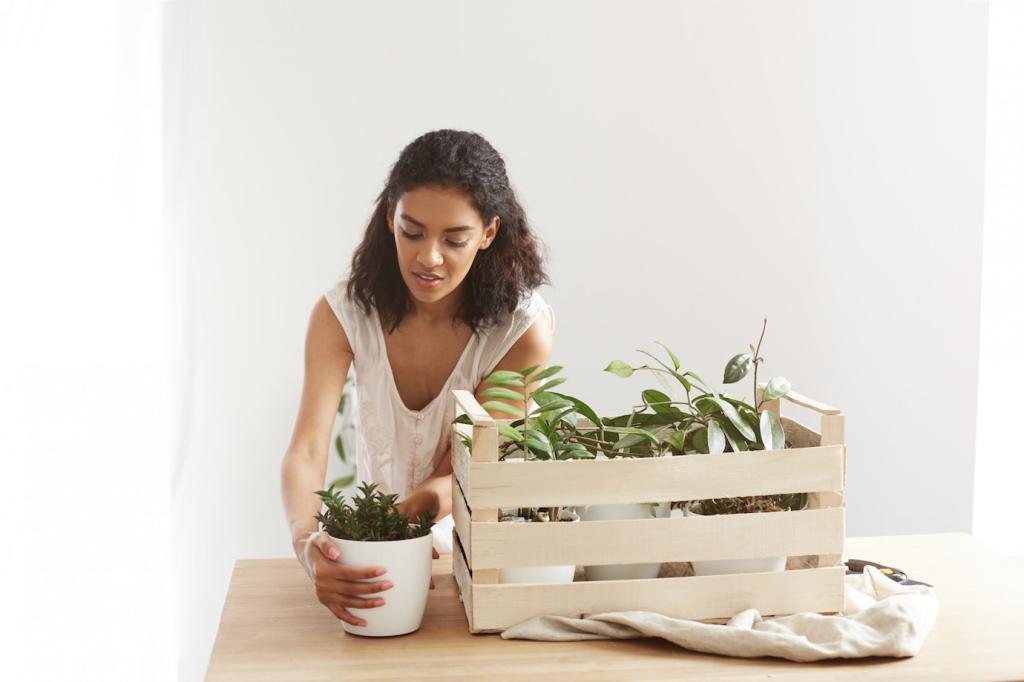Transforming your living space into an eco-friendly haven doesn’t require expert skills or expensive materials. By exploring simple, accessible do-it-yourself sustainable décor techniques, even beginners can create beautiful, lasting changes at home. This guide walks you through practical ways to craft stylish décor using earth-friendly practices, helping you reduce waste while expressing your creativity.

Repurposing Everyday Items
Most homes are filled with unused jars, cans, bottles, and boxes that typically get discarded. Instead of throwing them away, consider how these items can be transformed into vases, planters, storage containers, or artistic displays. A glass jar can become a candle holder or a hanging terrarium, for example. The key is to clean the items thoroughly, remove labels, and decorate them with eco-friendly paints or natural twines. Repurposing such objects not only adds character to your décor but also reduces waste and encourages creative problem-solving.

Breathing New Life into Old Textiles
Fabrics like old T-shirts, bed sheets, or curtains are often tossed without a second thought when they are no longer in use. However, with a bit of imagination and some basic sewing or fabric folding skills, these textiles can be turned into decorative pillows, rugs, or wall hangings. Patchwork, weaving, and simple knotting techniques offer limitless opportunities to incorporate personal history into your home. Embracing this approach brings coziness and sentimentality to your space while reducing textile landfill waste.

Furniture Revamps with Low Impact
Rather than replacing worn or outdated furniture, simple DIY techniques such as sanding, painting with non-toxic paints, or reupholstering with sustainable fabrics can breathe new life into tables, chairs, and shelves. Sanding and refinishing wooden furniture, for instance, can reveal beautiful grains and tones, while a coat of nature-derived paint updates a piece’s look. Choosing sustainable or second-hand materials for revamping not only saves money but also aligns with eco-conscious values.

Exploring Eco-Friendly Paints and Finishes
Traditional paints and finishes often release volatile organic compounds (VOCs) that can harm both your health and the environment. Fortunately, many DIY stores now stock eco-friendly alternatives made from natural clay, plant dyes, or milk proteins. These products offer an array of colors and finishes, allowing you to safely personalize everything from picture frames to accent walls. Experimenting with such environmentally-safe mediums can be both fun and reassuring, knowing you’re contributing to a healthier planet indoors and out.
Creating Décor with Bamboo and Cork
Bamboo and cork are fast-growing, renewable materials perfect for crafting home décor accessories. With their unique textures and versatility, they can be fashioned into wall hooks, coasters, and even small shelves. Cork’s resilience makes it ideal for bulletin boards and trivets, while bamboo’s smooth aesthetic suits organizers or minimalistic wall art. Incorporating these materials is not only stylish but also reinforces your commitment to responsible consumption.
Incorporating Organic Fabrics and Fibers
When making curtains, throw pillow covers, or wall tapestries, choosing fabrics such as organic cotton, hemp, or linen significantly lowers your carbon footprint compared to conventional textiles. These materials are cultivated without harmful chemicals, demanding less water and energy throughout their life cycles. Dyeing them with plant-based tints or leaving them natural adds understated elegance. Projects in this area can be as simple or ambitious as your skills allow, making organic fibers a perfect starting point for sustainable décor.
Minimizing Waste Through Smart Crafting
Using Project Scraps Purposefully
Leftover bits from one project can often serve as the seeds for another. For instance, wood offcuts can become drawer pulls, keychains, or plant markers. Fabric remnants might be turned into patchwork pieces or braided into coasters. By taking time to sort and store scraps, you set yourself up for spontaneous bursts of creativity while ensuring nothing usable goes to waste. As you build your crafting skills, you’ll find new ways to connect small pieces into larger masterpieces that tell a unique story.
Planning Projects for Materials Efficiency
Before starting a new DIY décor task, mapping out your materials needs ensures you only purchase or gather what you’ll actually use. This means measuring carefully, cutting with intention, and thinking through each project’s steps to optimize resources. For instance, cutting fabric in a way that produces minimal waste or sketching wood projects to use standard-sized pieces reduces the volume of leftovers. This strategic approach cultivates mindfulness in crafting and promotes a more sustainable, streamlined relationship with your resources.
Practicing Zero-Waste Crafting Techniques
Zero-waste crafting goes beyond repurposing—it’s about designing projects from the outset to avoid discards. This might involve weaving, braiding, or coiling techniques that utilize all materials with nothing left over. Some crafters even compost organic waste like wood shavings or cotton threads, integrating any inevitable remnants into a full-circle, sustainable approach. As you learn these methods, you’ll find that the satisfaction of making something beautiful is heightened by the knowledge that nothing is wasted in the process.
